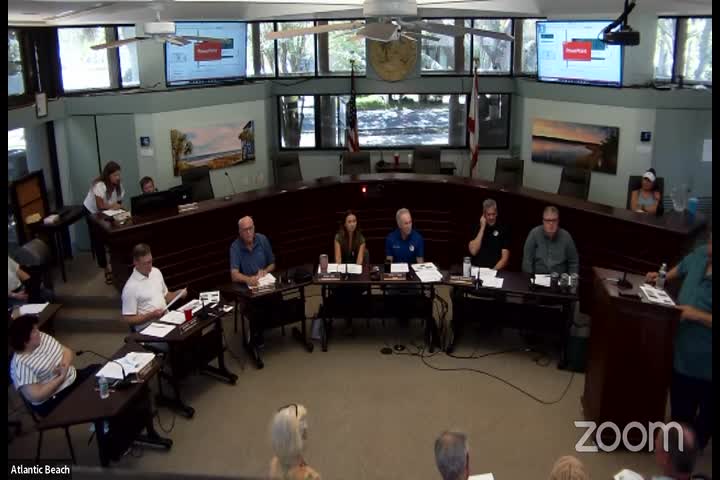Innovative Paver System Promises Breakthrough in Stormwater Management
July 27, 2024 | City of Atlantic Beach, Duval County, Florida

This article was created by AI summarizing key points discussed. AI makes mistakes, so for full details and context, please refer to the video of the full meeting. Please report any errors so we can fix them. Report an error »

In a recent government meeting, discussions centered around the implementation of permeable paver systems aimed at improving stormwater management in the community. Chris Bettinger from Oldcastle, a leading paver supplier, presented a detailed overview of the benefits and technical specifications of permeable interlocking concrete pavers (PICP). He emphasized the importance of these systems in addressing the challenges posed by rapid urban growth and the limitations of traditional stormwater management methods.
Bettinger highlighted a demonstration project that involved the installation of a test area measuring 16 by 30 feet, which was completed at no cost to the city, thanks to contributions from Oldcastle and local partners. This project includes an observation pipe that allows for real-time monitoring of water retention and drainage performance, providing a practical example of how permeable pavers can effectively manage stormwater.
The presentation outlined the advantages of permeable systems, which allow rainwater to infiltrate back into the ground, reducing the burden on existing stormwater infrastructure. Bettinger explained the layered structure of the paver system, which includes various sizes of aggregate designed to filter and store water efficiently. He noted that this approach not only helps manage runoff but also improves water quality by filtering out pollutants.
The meeting also addressed the need for ongoing maintenance of these systems to ensure their effectiveness. Bettinger assured attendees that maintenance guidelines would be provided to help residents and city officials manage the installations properly.
As the meeting progressed, the focus shifted to public comments, with several community members expressing interest in the permeable paver initiative. The discussions underscored a growing recognition of the need for innovative solutions to environmental challenges, particularly in areas experiencing significant development pressures. The successful implementation of permeable pavers could serve as a model for sustainable urban planning in the region.
Bettinger highlighted a demonstration project that involved the installation of a test area measuring 16 by 30 feet, which was completed at no cost to the city, thanks to contributions from Oldcastle and local partners. This project includes an observation pipe that allows for real-time monitoring of water retention and drainage performance, providing a practical example of how permeable pavers can effectively manage stormwater.
The presentation outlined the advantages of permeable systems, which allow rainwater to infiltrate back into the ground, reducing the burden on existing stormwater infrastructure. Bettinger explained the layered structure of the paver system, which includes various sizes of aggregate designed to filter and store water efficiently. He noted that this approach not only helps manage runoff but also improves water quality by filtering out pollutants.
The meeting also addressed the need for ongoing maintenance of these systems to ensure their effectiveness. Bettinger assured attendees that maintenance guidelines would be provided to help residents and city officials manage the installations properly.
As the meeting progressed, the focus shifted to public comments, with several community members expressing interest in the permeable paver initiative. The discussions underscored a growing recognition of the need for innovative solutions to environmental challenges, particularly in areas experiencing significant development pressures. The successful implementation of permeable pavers could serve as a model for sustainable urban planning in the region.
View full meeting
This article is based on a recent meeting—watch the full video and explore the complete transcript for deeper insights into the discussion.
View full meeting